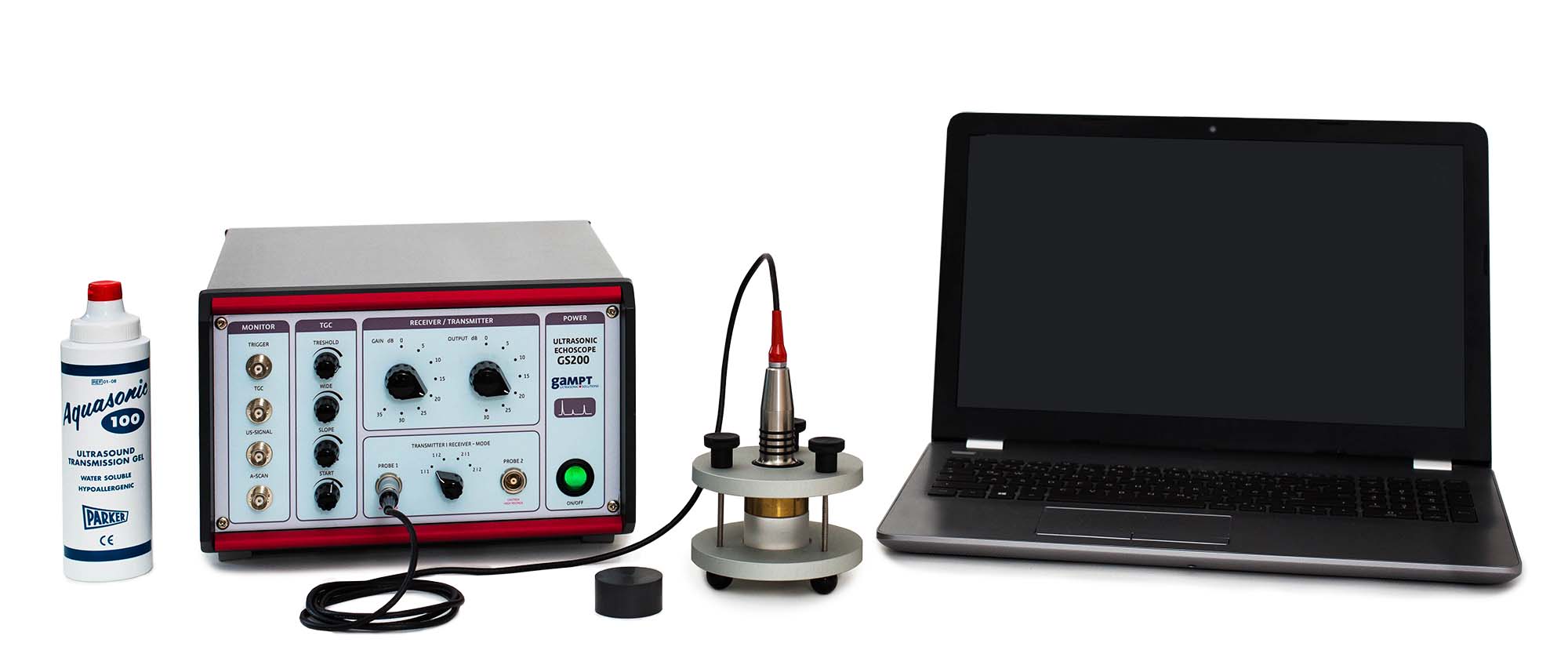Article No. VK-PHY21
PHY21 Reflection and transmission at boundaries
Investigation of the effect of reflection and transmission of ultrasonic waves at boundaries, Determination of the reflection coefficient
- Subject matter of the experiment
- Theoretical and practical aspects of the experiment
- Results
- Equipment
- Related Experiments
In the experiment, the effects of reflection and transmission of ultrasonic waves at boundaries are investigated. The reflection coefficient is determined for different combinations of the materials acrylic, PVC and brass.
Keywords: Propagation of ultrasonic waves in solids, pulse echo method, reflection/transmission at boundaries, reflection coefficient, acoustic impedance, sound attenuation
If an ultrasonic wave strikes the boundary of two materials of different characteristic acoustic impedance, it is partially or almost completely reflected. The part of reflected acoustic energy depends on the size of the difference between the characteristic acoustic impedances of the respective materials and is described by the reflection coefficient. Due to the low density and sound velocity of air, the reflection coefficient at a solid-air boundary is almost 1. Thanks to this, in the experiment the reflection coefficients for different combinations of the materials acrylic, PVC and brass can be determined by comparative measurements with the reflection coefficient against air. Furthermore, it is possible to achieve a qualitative description of the attenuation characteristics of the materials by comparing the investigated reflection echoes.
The reflection coefficients for acrylic/PVC-brass and brass-PVC/acrylic are almost the same and are probably above the theoretical values, due to a less than 100% coupling to the material junctions. The coefficients for acrylic/PVC and PVC/acrylic are almost equal and are almost zero due to the low difference between their characteristic acoustic impedances. The attenuation is lowest in brass. The largest number of multiple reflections occurs here. PVC shows the greatest attenuation, because the reflection peak of the PVC-acrylic measurement is substantially smaller with the same reflection coefficient than the reflection peak in the acrylic/PVC measurement.
| Ord.no. | Description |
|---|---|
| 10400 | Ultrasonic echoscope GS200 |
| 10152 | Ultrasonic probe 2 MHz |
| 10208 | Acoustic impedance samples |
| 70200 | Ultrasonic gel |

